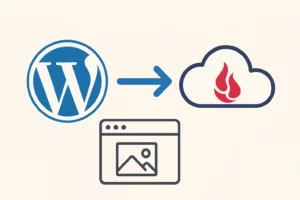As a WordPress plugin developer, version control is crucial for managing your code. While many developers prefer Git, Subversion (SVN) remains the official version control system for the WordPress.org plugin repository. In this guide, I’ll walk you through the essentials of using SVN for WordPress plugin development.
Why Use SVN?
SVN is the required version control system for submitting plugins to the WordPress.org repository. It allows you to:
- Track changes in your code
- Collaborate with other developers
- Manage different versions of your plugin
- Easily update your plugin on WordPress.org
Getting Started with SVN
1. Install SVN
First, you’ll need to install SVN on your local machine. The installation process varies depending on your operating system. For the most up-to-date installation instructions specific to your OS, visit Apache Subversion Packages.
This page provides official Apache Subversion binary packages for various operating systems, including Windows, macOS, and different Linux distributions. Follow the instructions for your specific OS to ensure you install the correct version of SVN.
After installation, you can verify that SVN is correctly installed by opening a terminal or command prompt and typing:
svn --versionThis command should display the version of SVN installed on your system.
2. Set Up Your SVN Repository
When your plugin is approved for the WordPress.org repository, you’ll receive an SVN URL. It will look something like this:
https://plugins.svn.wordpress.org/your-plugin-name/To start working with your plugin locally, you’ll need to check out (clone) the repository to your local machine. Use the following command in your terminal:
svn co https://plugins.svn.wordpress.org/your-plugin-name your-plugin-nameThis command tells SVN to check out (co) the repository at the specified URL and create a local copy in the directory named your-plugin-name. Replace your-plugin-name with your actual plugin’s name.
After running this command, you’ll have a local copy of your plugin’s repository, complete with its entire version history. This local copy is where you’ll make changes, test your code, and prepare your updates before committing them back to the WordPress.org repository.
SVN Directory Structure
Your SVN repository will have the following structure:
/trunk/: Contains the latest development version of your plugin/tags/: Stores different released versions of your plugin/assets/: Holds plugin assets like screenshots and banners
Basic SVN Workflow
Understanding these fundamental SVN commands will streamline your WordPress plugin development process:
1. Sync Local Copy with Remote Repository
svn upSynchronizes your local copy with the latest changes from the remote repository.
2. See which files have been modified
svn statDisplays the status of files in your working copy, showing modified, added, or deleted files.
3. Before committing, review your changes
svn diffShows the exact changes made to your files, line by line.
4. Stage New Plugin Files for SVN Commit
svn add trunk/*Adds all files in the trunk directory to version control. For a more comprehensive approach:
svn status | grep "^\?" | awk '{print $2}' | xargs svn addThis command adds all newly added files in your working copy.
Important note:
In SVN, you don’t need to explicitly “stage” modified files. This is different from Git, where you have to stage (add) both new and modified files before committing.
Modified files are automatically included in the next commit without any additional staging step.
5. Remove Deleted Files
svn st | grep ^! | awk '{print " --force "$2}' | xargs svn rmRemoves files from version control that you’ve deleted locally.
6. Commit Changes
svn ci -m "Your commit message"Pushes your local changes to the remote repository with a descriptive message.
7. Tag a New Version
svn cp trunk tags/2.0
svn ci -m "Tagging version 2.0"Creates a new tag for version 2.0 and commits it to the repository.
Conclusion
While SVN might seem old-fashioned compared to Git, it’s a powerful tool that serves its purpose well for WordPress plugin development. By following these guidelines, you’ll be able to manage your plugin effectively and collaborate smoothly with the WordPress.org ecosystem.
Remember, practice makes perfect. The more you use SVN, the more comfortable you’ll become with its workflow and commands.
I value your expertise: share your SVN tips, challenges, or best practices for WordPress plugin development in the comments below to help our community grow and improve together.


